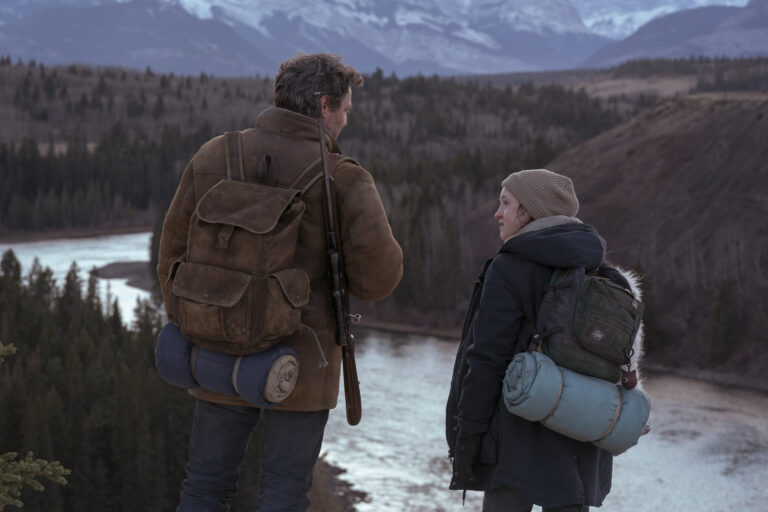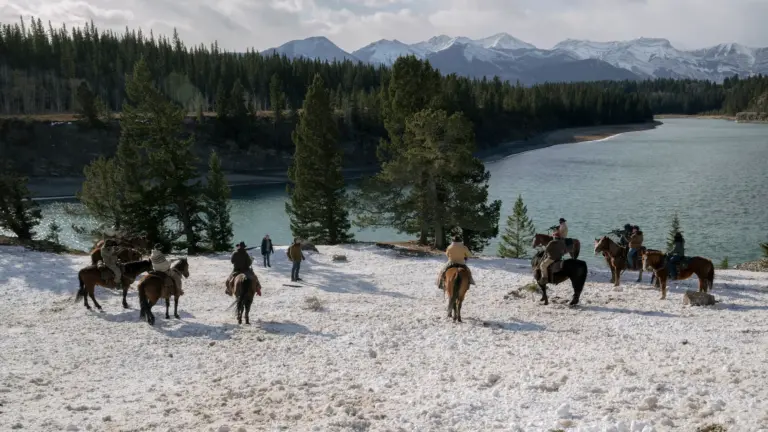The Last of Us isn’t just a visual masterpiece; it’s an auditory journey that tugs at our heartstrings, amplifies tension, and immerses us deeper into its post-apocalyptic world. The soundtrack, a blend of haunting melodies and poignant songs, plays a pivotal role in storytelling. Let’s embark on a musical exploration of Season 1 and peek into the anticipated tunes of Season 2.
Season 1: A Symphony of Survival and Emotion
Episode 1: “When You’re Lost in the Darkness”
- “Tomorrow” – Avril Lavigne: This track underscores the early scenes, reflecting youthful hope and the looming uncertainty of the world.
- “White Flag” – Dido: Echoing themes of resilience, this song complements the characters’ determination amidst chaos.
- “Never Let Me Down Again” – Depeche Mode: Closing the episode, its upbeat tempo juxtaposes dark lyrics, symbolizing Joel and Ellie’s budding yet complex relationship.
Episode 2: “Infected”
- “Hampa” – Ari Lasso: This Indonesian track introduces a global perspective to the pandemic’s reach, emphasizing the worldwide impact of the outbreak.
- “Allowed to Be Happy” – Gustavo Santaolalla: A melancholic piece that underscores the fleeting moments of joy in a world overrun by infection.
Episode 3: “Long, Long Time”
- “I’m Coming Home to Stay” – Fleetwood Mac: Played during Bill’s takeover of the town, this song reflects themes of reclaiming and establishing one’s territory.
- “White Room” – Cream: As Bill fortifies his surroundings, this track underscores his isolation and the starkness of his environment.
- “Long, Long Time” – Linda Ronstadt: A touching melody that encapsulates Bill and Frank’s evolving relationship, highlighting love’s endurance even in desolate times.
Episode 4: “Please Hold to My Hand”
- “Alone and Forsaken” – Hank Williams: The episode’s title references this song, mirroring the characters’ feelings of abandonment and desolation.
Episode 5: “Endure and Survive”
- “The Last of Us (Prevail)” – Gustavo Santaolalla: A stirring composition that underscores the characters’ resilience amidst overwhelming odds.
Episode 6: “Kin”
- “All or None” – Pearl Jam: Reflecting themes of loyalty and sacrifice, this track resonates with the episode’s exploration of familial bonds.
- “Never Let Me Down Again” – Jessica Mazin: A haunting rendition that echoes Ellie’s feelings of betrayal and longing.
Episode 7: “Left Behind”
- “Take On Me” – a-ha: A nostalgic tune that underscores Ellie and Riley’s fleeting moments of joy amidst the backdrop of a collapsing world.
- “I Got You Babe” – Etta James: Symbolizing the deep bond between Ellie and Riley, this song adds a layer of poignancy to their shared moments.
Episode 8: “When We Are in Need”
- “Blue Eyes” – Rayz: A subtle track that underscores the episode’s tension and the characters’ internal struggles.
Episode 9: “Look for the Light”
- “The Path” – Gustavo Santaolalla: A composition that encapsulates the culmination of Joel and Ellie’s journey, reflecting both hope and the weight of their experiences.
Season 2: Anticipated Melodies
While official details about Season 2’s soundtrack remain under wraps, some hints have surfaced:
- “Hey Ya!” – OutKast: Spotted in a wrap party image, this 2003 hit aligns with the show’s timeline and might feature in the upcoming season.
- “Take On Me” – a-ha: Given its significance in the game sequel and its appearance in Season 1, this track might play a more prominent role in Season 2.
- “Future Days” – Pearl Jam: Featured in the Season 2 trailer, this song hints at its thematic relevance to the upcoming narrative.
The Maestros Behind the Music
- Gustavo Santaolalla: Renowned for his work on the original game series, Santaolalla brings authenticity to the show’s score, blending minimalist compositions with profound emotional depth.
- David Fleming: Collaborating with Santaolalla, Fleming introduces fresh perspectives, enriching the series’ auditory landscape.
Gustavo Santaolalla Strikes Again
Gustavo Santaolalla, the brilliant Argentine composer behind the game’s unforgettable melodies, is back in action. Known for his minimalist, emotionally charged style, Santaolalla’s return wasn’t just fan service – it was a necessity. Because really, who else could capture the bleak yet beautiful vibe of Joel and Ellie’s journey?
Santaolalla didn’t simply recycle old tracks; instead, he mixed the familiar with the fresh. His score seamlessly transitions from nostalgia-inducing themes to new compositions, deepening our emotional connection to the story.

Enter David Fleming: Fresh Sounds in a Broken World
Alongside Santaolalla, composer David Fleming joined the project, bringing his own unique flavor. Fleming didn’t just sit around either – he experimented with sounds inspired by the gritty reality of a decaying civilization. This dynamic duo crafted a score that’s immersive and vibrant, capturing both desolation and hope with precision.

Iconic Songs and Unexpected Hits
But it wasn’t just instrumental magic that lifted the series. The show’s creators carefully placed iconic songs that packed an emotional punch, turning key scenes into unforgettable moments. Here are some of the standouts:
- “Never Let Me Down Again” by Depeche Mode: Featured in the pilot episode, this catchy yet dark tune perfectly encapsulated Joel and Ellie’s complex relationship. It struck such a chord that its streams skyrocketed immediately after airing.
- “Long, Long Time” by Linda Ronstadt: Who saw this coming? Featured prominently in Episode 3, Ronstadt’s beautiful ballad underscored Bill and Frank’s heartfelt, heartbreaking storyline. After the episode aired, this track surged in popularity, echoing the cultural revival that “Running Up That Hill” saw post-Stranger Things.
- “Alone and Forsaken” by Hank Williams: True fans knew this would appear – it had already graced the original game’s soundtrack. Williams’ somber, eerie tune perfectly complemented the fourth episode’s stark portrayal of loneliness and despair, enhancing the thematic depth.
Diving into the Soundtrack
And if watching the show wasn’t enough, HBO released the full soundtrack for fans craving deeper immersion. The soundtrack album features a whopping 66 tracks, each capturing pivotal moments from the show’s intense first season. Whether revisiting Joel’s emotional lows or Ellie’s resilient highs, the album provides the perfect background for any daydreamer (or survivalist).
Music as a Storytelling Force
What makes the music in The Last of Us so compelling? It doesn’t simply accompany the visuals – it tells a story of its own. Santaolalla and Fleming’s compositions aren’t background noise; they actively shape the narrative, building tension, signaling hope, and emphasizing heartbreak. Similarly, the carefully selected popular tracks deepen the viewers’ emotional ties to the characters and their struggles.
Think about it – music tells us how to feel when dialogue falls short. It heightens our anxiety during tense scenes, makes poignant moments more bittersweet, and delivers unexpected bursts of joy amid tragedy. The score and soundtrack combined to elevate the show’s storytelling from great to truly unforgettable.
More Than Just Notes
In adapting The Last of Us for TV, HBO realized one key thing – music isn’t just an accessory; it’s essential. Bringing back Gustavo Santaolalla and integrating impactful popular songs wasn’t just smart; it was genius. It honored the game’s legacy while creating something distinctly new for TV audiences.
So next time you’re rewatching your favorite episodes, pay close attention to those haunting guitar strings and emotionally charged tracks. Because in a world as bleak as The Last of Us, sometimes music becomes the brightest light.




